SOCIAL
Kajabi versus ClickFunnels: Which is Better?
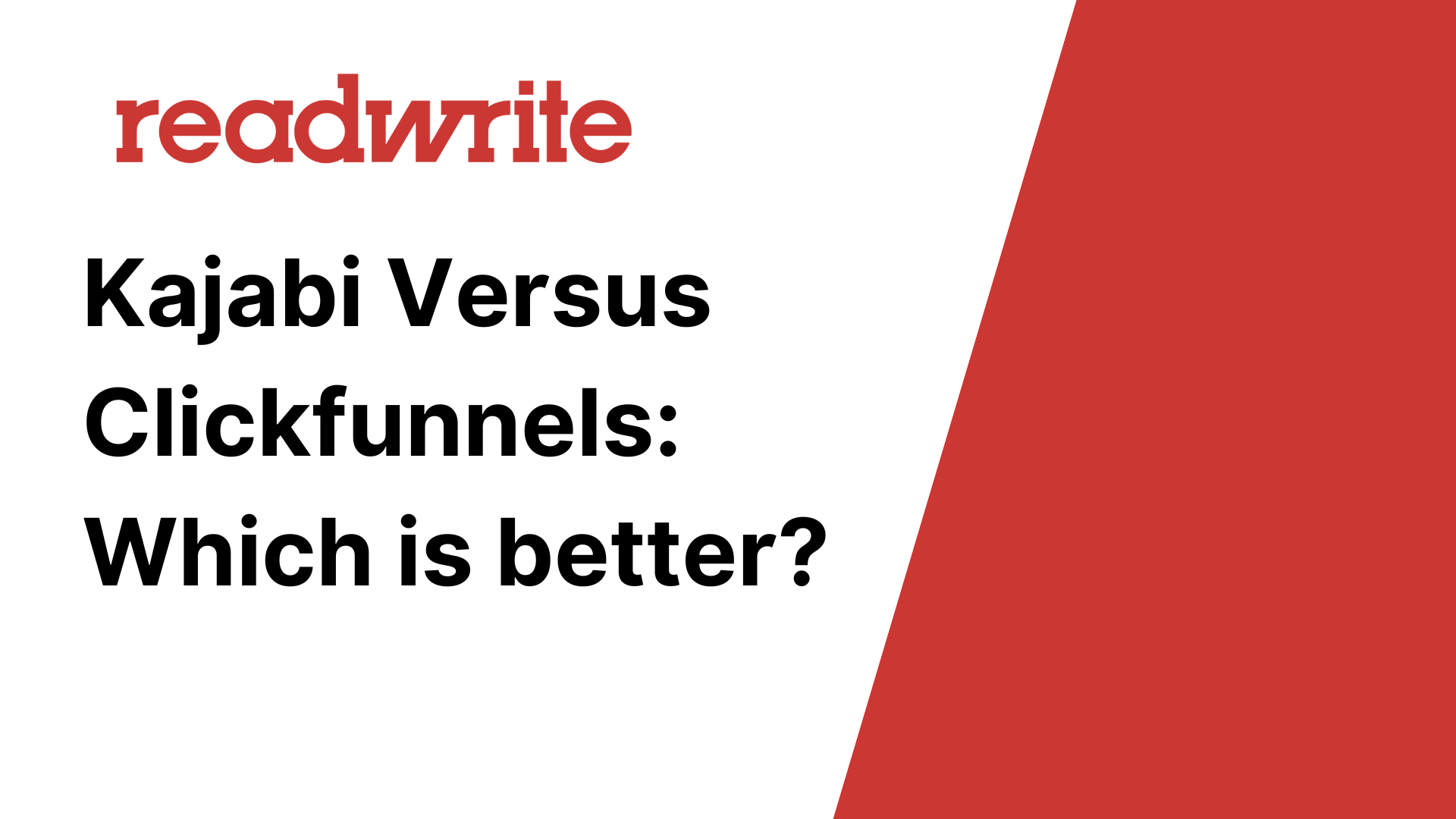
In today’s fast-paced digital landscape, online entrepreneurs and businesses have increasingly turned to powerful platforms such as Kajabi and ClickFunnels to build and manage their sales funnels, streamline marketing campaigns, and enhance customer engagement.
With each platform offering a unique blend of features and benefits, the choice between Kajabi and ClickFunnels has been a point of continuous debate for both industry experts and everyday users. In this article, we delve into and juxtapose these two formidable platforms, evaluating their strengths and weaknesses in a comprehensive comparison to help you make the most informed decision for your business.
|
From the ease of use and integration capabilities to the pricing structure and customer support, get ready to gain valuable insights and discover which platform – Kajabi or ClickFunnels – is the right fit for your online ventures.
What is Kajabi

Kajabi is an all-in-one platform that allows users to create, market, and sell online courses and digital products. It provides a range of tools, including website building, email marketing, and content management.
Kajabi aims to simplify the process of scaling digital businesses by offering a comprehensive solution for entrepreneurs and experts in various fields.
What is ClickFunnels
ClickFunnels is a software platform designed for creating effective sales funnels and marketing campaigns. It simplifies the process of building, launching, and managing online marketing funnels by providing pre-built templates and automation tools.
The primary goal of ClickFunnels is to help businesses generate leads, drive sales, and maximize profits through customized, user-friendly marketing efforts.
|
Why Use?
Kajabi and ClickFunnels are both popular all-in-one platforms that help businesses and entrepreneurs build online courses, membership sites, and sales funnels.

While both platforms have similar purposes, they have different features and use-cases, catering to various target audiences and business objectives. Here are some example use-cases for each platform:
Kajabi:
1. Online course creation and hosting: Kajabi empowers educators and subject matter experts to create and host online courses. With its built-in video hosting, quizzes, exams, and progress tracking features, Kajabi is an excellent platform for building, selling, and managing online courses.
2. Membership websites: Businesses or individuals looking to create a membership-based platform can use Kajabi to set up a dedicated website that provides exclusive content, resources, or community access (e.g., forums, discussion boards) to paying members.
3. Coaching and consulting: Professional consultants or coaches can use Kajabi to create an online presence, promote their services, and offer multiple coaching packages. They can manage their clients, deliver content, and receive payments, all in one place.
4. Digital product selling: Creators of digital products such as eBooks, templates, or graphics can use Kajabi to set up a digital storefront and manage sales and delivery of their products.
ClickFunnels:
1. Building sales funnels: ClickFunnels primarily focuses on facilitating the creation and optimization of various types of sales funnels. Businesses can design landing pages, create product offers, build effective sales pages, and manage the entire customer journey through multiple funnel stages.
2. Webinar funnels: ClickFunnels allows users to create webinars, both live and automated, to promote their products, services, or online courses. With its built-in email marketing and autoresponder integration, ClickFunnels makes it easy to nurture leads, send reminders, and follow up with potential customers.
3. Lead generation: ClickFunnels excels in lead generation for businesses. Users can quickly build opt-in pages and lead magnets that capture visitors’ contact information and can be integrated with popular email marketing tools.
4. Affiliate marketing: ClickFunnels offers its own affiliate program, which enables users to promote and sell their products and earn commission for every successful sale, using a variety of affiliate marketing tools and resources.
In summary, Kajabi is an excellent platform for those looking to create and sell digital products and online courses, while ClickFunnels’ main strength lies in building sales funnels and lead generation strategies. Both platforms have overlapping features but cater to different business needs and objectives.
|
Features
Kajabi:
Kajabi is an all-in-one platform designed to help businesses build, market, and sell online courses and digital products. It offers a comprehensive suite of tools and features that aims to streamline the process of creating and managing an online business.
Some of the main features of Kajabi include:
- Course Creation: Kajabi enables users to create and customize online courses using a user-friendly interface. It offers various templates to help users organize and present their content in an engaging manner. Additionally, Kajabi supports diverse content types such as video, audio, text, and quizzes to provide a rich learning experience.
- Website Builder: Kajabi comes with a robust website builder, allowing users to create a fully customizable and professional-looking website without needing any coding experience. It provides a variety of templates, themes, and design elements, along with the ability to add custom domains and use responsive designs to ensure your site looks great on any device.
- Marketing and Sales Tools: Kajabi offers an integrated suite of marketing and sales tools designed to help users generate leads, build an email list, and convert prospects into paying customers. Some notable features include email marketing, landing pages, sales funnels, automations, and analytics to monitor and optimize your marketing efforts. Plus, it offers seamless integration with popular payment gateways like Stripe and PayPal.
- Customer Relationship Management (CRM): Kajabi provides an inbuilt CRM system to help businesses manage and communicate with their customers, offering insights into customer actions, purchases, and engagement. This enables users to segment their audience, send targeted messages, and ultimately improve their customer retention and satisfaction.
ClickFunnels:
ClickFunnels, on the other hand, is a platform focused on creating effective sales funnels and landing pages. It offers a range of tools designed to help businesses convert website visitors into leads, prospects, and paying customers.
Here are some of the main features of ClickFunnels:
- Funnel Builder: ClickFunnels is primarily known for its intuitive drag-and-drop funnel builder, which allows users to create high-converting sales funnels with ease. Users can choose from a range of pre-built templates or create custom funnels from scratch, tailoring them to their specific needs and goals.
- Landing Page Builder: The platform includes a versatile landing page builder, enabling users to create visually appealing and optimized landing pages that help drive conversions. With its vast selection of templates and design elements, ClickFunnels simplifies the process of building engaging landing pages without the need for coding or design experience.
- Marketing and Sales Automation: ClickFunnels offers marketing and sales automation tools for nurturing leads and streamlining the sales process. This includes email marketing, SMS messaging, automated follow-ups, and integrations with popular CRM and email marketing platforms. Additionally, the platform provides an affiliate management system to help businesses leverage affiliate marketing to grow their customer base.
- Payment Integrations and Order Forms: ClickFunnels makes it easy to set up and manage online payments with its built-in payment integrations like Stripe, PayPal, and others. Users can create secure order forms, upsells, downsells, and one-click purchases, simplifying the buying process and increasing the potential for revenue generation.
Overall, Kajabi and ClickFunnels cater to different aspects of the online business ecosystem. Kajabi is better suited for those looking to create and sell online courses or digital products, while ClickFunnels is focused on helping businesses build and optimize their sales funnels and marketing efforts.
|
Pros n Cons
Kajabi Pros:
1. Comprehensive Solution:
- Kajabi is an all-in-one platform that provides website building, marketing, and course creation tools, making it easy to create, market, and sell online courses and memberships.
2. Professional Templates:
- Kajabi offers a variety of pre-built, customizable templates suitable for various industries and needs, giving users a professional and easy-to-use starting point.
3. Integrations:
- Kajabi integrates with many third-party tools, including popular payment gateways, email marketing services, and CRM platforms, allowing users to streamline their workflows.
4. Built-in Automation:
- With Kajabi, users can create automated marketing campaigns, email sequences, and other automation features to save time and improve customer communication.
5. Community Support:
- Kajabi has a strong user community and offers various resources, including webinars, tutorial videos, and a responsive support team.
Kajabi Cons:
1. Pricing:
- Kajabi’s pricing plans can be relatively expensive, especially for small businesses or individuals just starting out in online course creation.
2. Limited Customization:
- While the templates provided by Kajabi are professional, they can be somewhat restrictive in terms of customization.
3. Steeper Learning Curve:
- Kajabi offers many features but can be overwhelming for new users. It may take some time to learn to navigate the platform effectively.
4. Limited SEO Optimization:
- Kajabi’s platform doesn’t provide extensive SEO optimization tools, which can limit the organic search traffic potential for courses and websites.
ClickFunnels Pros:
1. Easy Funnel Creation:
- ClickFunnels simplifies the process of creating sales funnels, allowing even users with limited technical knowledge to design effective marketing campaigns.
2. Drag-and-Drop Editor:
- ClickFunnels offers a user-friendly drag-and-drop editor for designing landing pages, making customization easy and accessible.
3. Integrations:
- ClickFunnels integrates with various third-party tools, such as email marketing services, CRM systems, and payment gateways, which can enhance user workflows.
4. A/B Testing:
- ClickFunnels provides built-in A/B testing tools to help users optimize their funnels and improve conversion rates.
5. Extensive Training Resources:
- ClickFunnels offers numerous training resources, including the Funnel Hacking Live event, the Funnel Hacker’s Cookbook, and a dedicated community forum.
Clickfunnels Cons:
1. Pricing:
- ClickFunnels is relatively expensive, with the entry-level plan offering limited features and higher-tier plans offering more options at a higher cost.
2. Limited Website Building Capability:
- ClickFunnels focuses primarily on landing pages and sales funnel creation and is not designed as a full-scale website builder, limiting its scope of use.
3. Customer Support:
- Some users have reported dissatisfaction with ClickFunnels’ customer support, stating that responses can be slow or unhelpful.
4. Upsells:
- ClickFunnels frequently promotes additional products and upsells, which can be annoying for users looking for a straightforward sales funnel solution.
5. Limited Customization:
- While the drag-and-drop editor makes landing page design easy, it can be somewhat restrictive in terms of design customization, particularly for more advanced users.
|
How to setup Kajabi
Step 1: Sign up for a Kajabi account
- Visit Kajab’s website at https://www.kajabi.com/.
- Click on the “Get Started” or “Start Free Trial” button.
- Fill out the required information, including your name, email address, and password.
- Click “Create your Kajabi account” to complete the registration process.
Step 2: Choose a plan
- Review Kajabi’s pricing options to determine which plan best suits your needs.
- Select a plan, which can be changed at any time, by clicking on the “Choose Plan” button below your preferred option.
- Fill out your payment details to activate the plan.
Step 3: Customize your site
- Log in to your Kajabi dashboard.
- Click “Website” in the left-hand menu and then “Design Your Site.”
- Choose a theme for your site and adjust colors, fonts, and other visual elements to match your brand.
- Create and customize pages (such as Home, About, Contact, etc.) by clicking “Pages” in the left-hand menu, and then “Add New Page.”
Step 4: Create online courses or products
- Click “Products” in the left-hand menu of your dashboard.
- Click “Create a new product” and choose a product template (such as mini-course, online course, or community).
- Provide a name and description for your product and click on “Create a Product.”
- Customize your product’s content by adding sections, lectures, and other materials.
- Configure your product’s settings, including pricing, access rules, and integrations with other tools.
Step 5: Set up payment and marketing options
- Click “Settings” in the left-hand menu and then “Payments” to connect Kajabi to your preferred payment gateway (e.g., Stripe, PayPal).
- Customize your checkout settings, such as currency, taxes, and legal agreements.
- Set up email marketing, if desired, by clicking “Email” in the left-hand menu and connecting Kajabi to an email service provider such as Mailchimp or ActiveCampaign.
- Create and customize marketing funnels, also known as pipelines, to automate your sales process by clicking “Pipelines” in the left-hand menu and then “Create New Pipeline.”
After completing the steps above, your Kajabi site will be ready to launch. Share the link to your site with your audience, promote your courses, and watch your online business grow!
|
How to setup ClickFunnels
Setting up ClickFunnels is a straightforward process that can be broken down into the following steps:
Step 1: Sign up for ClickFunnels
- Begin by signing up for a ClickFunnels account on their website (www.clickfunnels.com). You can start with a 14-day free trial to test the platform and decide which plan suits your needs.
- Once you’ve chosen a plan, create your account by providing your email address and setting a password.
Step 2: Personalize your account
- After signing up, personalize your account by adding your logo, setting your time zone, and connecting your domain (optional). Connecting your domain will enable you to have your funnels appear on your website.
Step 3: Choose your funnel
- Click on the “Funnels” tab on the ClickFunnels dashboard. Here, you can either create a new funnel or select from pre-built industry-specific templates.
- Click on the “Build Funnel” button and choose “Create New Funnel.” You will need to select whether you want to create a sales funnel, generate leads, or host a webinar.
Step 4: Name your funnel
- Give your funnel a descriptive name and add a short tagline (optional). This will help you easily identify your funnel in the future.
Step 5: Customize your funnel
- Once you have chosen the type of funnel you want, you can start customizing it to suit your needs. This includes selecting the right pages to use, the layout, images, text, and more. ClickFunnels provides a drag and drop feature to make this process as easy as possible.
- You can customize each page in your funnel by clicking on the “Edit Page” button. When you’re finished making changes to a specific page, click on the “Save” button.
Step 6: Connect email marketing and payment gateways
- To maximize the effectiveness of your funnels, you should connect them to your email marketing platform and payment gateways.
- Go to “Integrations” in the menu to link email marketing tools like MailChimp, Aweber, or ActiveCampaign. You can also connect your preferred payment gateway, including Stripe, PayPal, and others.
Step 7: Set up automation and email sequences
- With your integrations set up, create automation rules for your funnel by clicking on the “Automation” tab. This allows you to send follow-up emails, create tasks, and more based on user actions. You can automate emails to be sent after a specific amount of time or choose a trigger based on the actions taken by the users.
Step 8: Test and launch your funnel
- Before launching your funnel, make sure you’ve tested the funnel thoroughly. Double-check your connections, integrations, and email sequences. You can use ClickFunnels’ built-in test mode or conduct live tests with minimal transactions.
- Once you’re satisfied with your funnel setup, click “Publish” to launch your funnel. You can now start sharing the URL with your target audience and tracking your funnel’s performance.
By following these steps, you can have your ClickFunnels fully set up and ready to start generating leads and driving sales for your business.
|
Main Differences

Kajabi and ClickFunnels are two popular online platforms designed to help business owners and entrepreneurs create, manage, and grow their online presence.
While both platforms offer a range of features and tools to help users succeed, they have different approaches and cater to slightly different needs.
Kajabi is primarily focused on creating and selling online courses, memberships, and digital products. It offers a robust range of features to help users create attractive and engaging websites, build comprehensive sales funnels, and integrate with various marketing tools and payment processors.
In addition to that, Kajabi has a built-in LMS (Learning Management System) which allows creators to deliver high-quality educational content while also providing excellent user experience for their customers.
This makes Kajabi an ideal choice for those looking to create and sell online courses or memberships.
On the other hand, ClickFunnels is specifically designed to help businesses build effective sales funnels to convert website visitors into paying customers. The platform offers a simple drag-and-drop interface that allows users to create a variety of sales funnel types, including opt-in funnels, product launch funnels, webinar funnels, and membership sites.
It also includes email marketing integrations, an affiliate management system, and a host of other marketing tools aimed at increasing conversions and generating leads. With its more comprehensive focus on the entire sales process, ClickFunnels is better suited for businesses that are looking to optimize their sales and lead generation efforts, rather than creating educational content.
In summary, both Kajabi and ClickFunnels serve specific purposes and cater to different target audiences. Kajabi is the better choice for those focusing on creating and selling online courses, digital products, and memberships with an emphasis on delivering high-quality educational content.
Meanwhile, ClickFunnels is more geared towards businesses and entrepreneurs who want an all-in-one platform for building sales funnels, lead generation, and email marketing. The choice between the two platforms should ultimately depend on the individual user’s needs and goals.
|
Pricing Comparison
Kajabi and ClickFunnels are two popular online platforms that help businesses create, market, and sell their products or services. Both platforms offer different pricing plans to cater to a variety of users, but they each have their own advantages and features.
Here’s a comparison of their pricing:
Kajabi’s Pricing Plans:
- Basic Plan:
- $149 per month (billed annually) or $199 per month (billed monthly)
- 3 products and 3 pipelines
- 1,000 active members
- 1 website and 1 admin user
- 0% transaction fees
- Unlimited landing pages and marketing emails
- Webinars and events, chat support, and more
- Growth Plan:
- $199 per month (billed annually) or $299 per month (billed monthly)
- 15 products and 15 pipelines
- 10,000 active members
- 1 website and up to 10 admin users
- 0% transaction fees
- Unlimited landing pages and marketing emails
- Advanced features like 24/7 chat support, automated webinars, and more
- Pro Plan
- $399 per month (billed annually) or $499 per month (billed monthly)
- 100 products and 100 pipelines
- 20,000 active members
- 1 website and up to 25 admin users
- 0% transaction fees
- Unlimited landing pages and marketing emails
- Premium features like 24/7 phone support, affiliate program, and more
ClickFunnels Pricing:
ClickFunnels offers two main pricing plans:
- Standard Plan:
- $97 per month Features include:
- 20 sales funnels
- 100 pages
- 1 user
- 3 payment gateways
- 3 domains
- Unlimited leads
- Chat support
- Platinum Plan:
- $297 per month Features include (in addition to the Standard Plan):
- Unlimited sales funnels
- Unlimited pages
- 3 users
- 9 payment gateways
- 9 domains
- Priority chat support
- Follow-up funnels (email automation)
- Weekly peer review hackathons
![Kajabi versus ClickFunnels: Which is Better? ClickFunnels Pricing Guide [2020]: 7 ClickFunnels Pricing Plans — EZJ Online](https://articles.entireweb.com/wp-content/uploads/2023/06/1687669186_510_Kajabi-versus-ClickFunnels-Which-is-Better.png)
In conclusion, the pricing for Kajabi and ClickFunnels varies on what you need and what features you are looking for. If you’re mainly focused on creating sales funnels and email automation, ClickFunnels might be the better option.
However, if you need a more comprehensive platform for creating online courses, memberships, and an all-in-one marketing and sales platform, Kajabi might be a better fit. It’s important to evaluate your needs and goals when choosing between these two platforms.
Frequently Asked Questions
Q: What is Kajabi?
A: Kajabi is an all-in-one online platform designed primarily for creating, marketing, and selling online courses, digital products, and membership sites. It comes with specific features to help users create content, build landing pages, manage email marketing, and much more.
Q: What is ClickFunnels?
A: ClickFunnels is a platform that focuses on creating sales funnels, allowing users to design a series of pages, automate email marketing, and sell digital or physical products. Its primary goal is to help businesses increase leads, generate sales, and simplify the sales process online.
Q: How do Kajabi and ClickFunnels differ in terms of functionality?
A: While Kajabi is specifically designed for creators who want to sell digital products, courses, and membership sites, ClickFunnels’ main focus is on building sales funnels that help convert leads into customers. Both platforms have features like landing page builders and email marketing tools, but the main distinction lies in their target audience and use cases.
Q: Can Kajabi and ClickFunnels be used together?
A: Yes, both platforms can be integrated to complement each other’s functionalities. For example, Kajabi can be used to create and market the digital content, while ClickFunnels can be employed to design powerful sales funnels to sell the produced courses or digital products.
Q: Is either platform better for certain industries?
A: Kajabi tends to be better suited for educational content creators like coaches, consultants, and course creators. On the other hand, ClickFunnels is more versatile and can be used across various industries, primarily focusing on converting leads into customers using sales funnels.
Q: How do the pricing options of Kajabi and ClickFunnels compare?
A: Both platforms offer multiple pricing plans to choose from, depending on the needs of users. However, Kajabi’s plans typically start at a higher price point than ClickFunnels. It’s essential to analyze the features included in each pricing plan to determine the most suitable option for your business.
Q: Are there any free trials available for Kajabi and ClickFunnels?
A: Yes, both Kajabi and ClickFunnels usually offer a free trial period for prospective users to test out the platform and decide if it’s the right fit for their businesses. Kajabi typically provides a 14-day free trial, while ClickFunnels may offer a 14-day or 30-day free trial depending on the available promotions.
|
Conclusion
In conclusion, the choice between Kajabi and ClickFunnels ultimately depends on the specific needs and goals of your online business. Both platforms offer powerful and versatile solutions for digital entrepreneurs, with Kajabi focusing on creating and selling comprehensive online courses, memberships, and digital products, while ClickFunnels emphasizes on building dynamic sales funnels that convert visitors into customers.
Consider your business’s primary objective before making a decision: if your focus is on delivering valuable content and creating engaging online learning experiences, Kajabi might be the better option.
On the other hand, if your priority is driving sales and increasing conversion rates through highly-targeted marketing campaigns, ClickFunnels may be a more suitable choice. Moreover, it’s important to weigh the pros and cons of each platform, including factors like pricing, customization options, features, integrations, ease of use, and customer support.
Taking the time to thoroughly assess the advantages and disadvantages of Kajabi and ClickFunnels will ensure that you make an informed decision and select the platform that best aligns with your business’s unique needs and aspirations.
Whichever platform you choose, both Kajabi and ClickFunnels have the potential to significantly contribute to your online success by streamlining your sales funnels, enhancing your digital presence, and ultimately, boosting your bottom line.
SOCIAL
12 Proven Methods to Make Money Blogging in 2024

 This is a contributed article.
This is a contributed article.
The world of blogging continues to thrive in 2024, offering a compelling avenue for creative minds to share their knowledge, build an audience, and even turn their passion into profit. Whether you’re a seasoned blogger or just starting, there are numerous effective strategies to monetize your blog and achieve financial success. Here, we delve into 12 proven methods to make money blogging in 2024:
1. Embrace Niche Expertise:
Standing out in the vast blogosphere requires focus. Carving a niche allows you to cater to a specific audience with targeted content. This not only builds a loyal following but also positions you as an authority in your chosen field. Whether it’s gardening techniques, travel hacking tips, or the intricacies of cryptocurrency, delve deep into a subject you’re passionate and knowledgeable about. Targeted audiences are more receptive to monetization efforts, making them ideal for success.
2. Content is King (and Queen):
High-quality content remains the cornerstone of any successful blog. In 2024, readers crave informative, engaging, and well-written content that solves their problems, answers their questions, or entertains them. Invest time in crafting valuable blog posts, articles, or videos that resonate with your target audience.
- Focus on evergreen content: Create content that remains relevant for a long time, attracting consistent traffic and boosting your earning potential.
- Incorporate multimedia: Spice up your content with captivating images, infographics, or even videos to enhance reader engagement and improve SEO.
- Maintain consistency: Develop a regular publishing schedule to build anticipation and keep your audience coming back for more.
3. The Power of SEO:
Search Engine Optimization (SEO) ensures your blog ranks high in search engine results for relevant keywords. This increases organic traffic, the lifeblood of any monetization strategy.
- Keyword research: Use keyword research tools to identify terms your target audience searches for. Strategically incorporate these keywords into your content naturally.
- Technical SEO: Optimize your blog’s loading speed, mobile responsiveness, and overall technical aspects to improve search engine ranking.
- Backlink building: Encourage other websites to link back to your content, boosting your blog’s authority in the eyes of search engines.
4. Monetization Magic: Affiliate Marketing
Affiliate marketing allows you to earn commissions by promoting other companies’ products or services. When a reader clicks on your affiliate link and makes a purchase, you get a commission.
- Choose relevant affiliates: Promote products or services that align with your niche and resonate with your audience.
- Transparency is key: Disclose your affiliate relationships clearly to your readers and build trust.
- Integrate strategically: Don’t just bombard readers with links. Weave affiliate promotions naturally into your content, highlighting the value proposition.
5. Display Advertising: A Classic Approach
Display advertising involves placing banner ads, text ads, or other visual elements on your blog. When a reader clicks on an ad, you earn revenue.
- Choose reputable ad networks: Partner with established ad networks that offer competitive rates and relevant ads for your audience.
- Strategic ad placement: Place ads thoughtfully, avoiding an overwhelming experience for readers.
- Track your performance: Monitor ad clicks and conversions to measure the effectiveness of your ad placements and optimize for better results.
6. Offer Premium Content:
Providing exclusive, in-depth content behind a paywall can generate additional income. This could be premium blog posts, ebooks, online courses, or webinars.
- Deliver exceptional value: Ensure your premium content offers significant value that justifies the price tag.
- Multiple pricing options: Consider offering tiered subscription plans to cater to different audience needs and budgets.
- Promote effectively: Highlight the benefits of your premium content and encourage readers to subscribe.
7. Coaching and Consulting:
Leverage your expertise by offering coaching or consulting services related to your niche. Readers who find your content valuable may be interested in personalized guidance.
- Position yourself as an expert: Showcase your qualifications, experience, and client testimonials to build trust and establish your credibility.
- Offer free consultations: Provide a limited free consultation to potential clients, allowing them to experience your expertise firsthand.
- Develop clear packages: Outline different coaching or consulting packages with varying time commitments and pricing structures.
8. The Power of Community: Online Events and Webinars
Host online events or webinars related to your niche. These events offer valuable content while also providing an opportunity to promote other monetization avenues.
- Interactive and engaging: Structure your online events to be interactive with polls, Q&A sessions, or live chats. Click here to learn more about image marketing with Q&A sessions and live chats.
9. Embrace the Power of Email Marketing:
Building an email list allows you to foster stronger relationships with your audience and promote your content and offerings directly.
- Offer valuable incentives: Encourage readers to subscribe by offering exclusive content, discounts, or early access to new products.
- Segmentation is key: Segment your email list based on reader interests to send targeted campaigns that resonate more effectively.
- Regular communication: Maintain consistent communication with your subscribers through engaging newsletters or updates.
10. Sell Your Own Products:
Take your expertise to the next level by creating and selling your own products. This could be physical merchandise, digital downloads, or even printables related to your niche.
- Identify audience needs: Develop products that address the specific needs and desires of your target audience.
- High-quality offerings: Invest in creating high-quality products that offer exceptional value and user experience.
- Utilize multiple platforms: Sell your products through your blog, online marketplaces, or even social media platforms.
11. Sponsorships and Brand Collaborations:
Partner with brands or businesses relevant to your niche for sponsored content or collaborations. This can be a lucrative way to leverage your audience and generate income.
- Maintain editorial control: While working with sponsors, ensure you retain editorial control to maintain your blog’s authenticity and audience trust.
- Disclosures are essential: Clearly disclose sponsored content to readers, upholding transparency and ethical practices.
- Align with your niche: Partner with brands that complement your content and resonate with your audience.
12. Freelancing and Paid Writing Opportunities:
Your blog can serve as a springboard for freelance writing opportunities. Showcase your writing skills and expertise through your blog content, attracting potential clients.
- Target relevant publications: Identify online publications, websites, or magazines related to your niche and pitch your writing services.
- High-quality samples: Include high-quality blog posts from your site as writing samples when pitching to potential clients.
- Develop strong writing skills: Continuously hone your writing skills and stay updated on current trends in your niche to deliver exceptional work.
Conclusion:
Building a successful blog that generates income requires dedication, strategic planning, and high-quality content. In today’s digital age, there are numerous opportunities to make money online through blogging. By utilizing a combination of methods such as affiliate marketing, sponsored content, and selling digital products or services, you can leverage your blog’s potential and achieve financial success.
Remember, consistency in posting, engaging with your audience, and staying adaptable to trends are key to thriving in the ever-evolving blogosphere. Embrace new strategies, refine your approaches, and always keep your readers at the forefront of your content creation journey. With dedication and the right approach, your blog has the potential to become a valuable source of income and a platform for sharing your knowledge and passion with the world, making money online while doing what you love.
Image Credit: DepositPhotos
SOCIAL
Snapchat Explores New Messaging Retention Feature: A Game-Changer or Risky Move?

In a recent announcement, Snapchat revealed a groundbreaking update that challenges its traditional design ethos. The platform is experimenting with an option that allows users to defy the 24-hour auto-delete rule, a feature synonymous with Snapchat’s ephemeral messaging model.
The proposed change aims to introduce a “Never delete” option in messaging retention settings, aligning Snapchat more closely with conventional messaging apps. While this move may blur Snapchat’s distinctive selling point, Snap appears convinced of its necessity.
According to Snap, the decision stems from user feedback and a commitment to innovation based on user needs. The company aims to provide greater flexibility and control over conversations, catering to the preferences of its community.
Currently undergoing trials in select markets, the new feature empowers users to adjust retention settings on a conversation-by-conversation basis. Flexibility remains paramount, with participants able to modify settings within chats and receive in-chat notifications to ensure transparency.
Snapchat underscores that the default auto-delete feature will persist, reinforcing its design philosophy centered on ephemerality. However, with the app gaining traction as a primary messaging platform, the option offers users a means to preserve longer chat histories.
The update marks a pivotal moment for Snapchat, renowned for its disappearing message premise, especially popular among younger demographics. Retaining this focus has been pivotal to Snapchat’s identity, but the shift suggests a broader strategy aimed at diversifying its user base.
This strategy may appeal particularly to older demographics, potentially extending Snapchat’s relevance as users age. By emulating features of conventional messaging platforms, Snapchat seeks to enhance its appeal and broaden its reach.
Yet, the introduction of message retention poses questions about Snapchat’s uniqueness. While addressing user demands, the risk of diluting Snapchat’s distinctiveness looms large.
As Snapchat ventures into uncharted territory, the outcome of this experiment remains uncertain. Will message retention propel Snapchat to new heights, or will it compromise the platform’s uniqueness?
Only time will tell.
SOCIAL
Catering to specific audience boosts your business, says accountant turned coach

While it is tempting to try to appeal to a broad audience, the founder of alcohol-free coaching service Just the Tonic, Sandra Parker, believes the best thing you can do for your business is focus on your niche. Here’s how she did just that.
When running a business, reaching out to as many clients as possible can be tempting. But it also risks making your marketing “too generic,” warns Sandra Parker, the founder of Just The Tonic Coaching.
“From the very start of my business, I knew exactly who I could help and who I couldn’t,” Parker told My Biggest Lessons.
Parker struggled with alcohol dependence as a young professional. Today, her business targets high-achieving individuals who face challenges similar to those she had early in her career.
“I understand their frustrations, I understand their fears, and I understand their coping mechanisms and the stories they’re telling themselves,” Parker said. “Because of that, I’m able to market very effectively, to speak in a language that they understand, and am able to reach them.”Â
“I believe that it’s really important that you know exactly who your customer or your client is, and you target them, and you resist the temptation to make your marketing too generic to try and reach everyone,” she explained.
“If you speak specifically to your target clients, you will reach them, and I believe that’s the way that you’re going to be more successful.
Watch the video for more of Sandra Parker’s biggest lessons.
-

 MARKETING5 days ago
MARKETING5 days ago18 Events and Conferences for Black Entrepreneurs in 2024
-

 MARKETING6 days ago
MARKETING6 days agoIAB Podcast Upfront highlights rebounding audiences and increased innovation
-

 MARKETING6 days ago
MARKETING6 days agoFoundations of Agency Success: Simplifying Operations for Growth
-

 SEO5 days ago
SEO5 days agoWhy Google Can’t Tell You About Every Ranking Drop
-
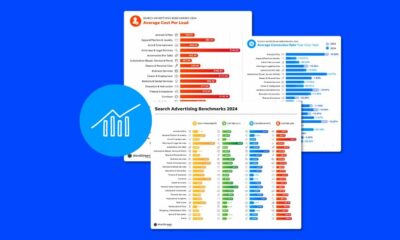
 PPC5 days ago
PPC5 days agoGoogle Ads Benchmarks 2024: New Trends & Insights for Key Industries
-
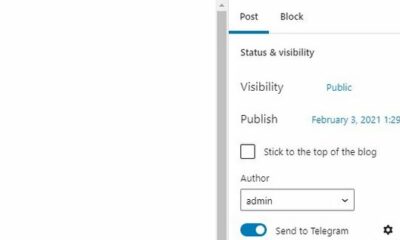
 WORDPRESS6 days ago
WORDPRESS6 days ago5 Must See Telegram Plugins for WooCommerce
-

 WORDPRESS7 days ago
WORDPRESS7 days agoThe 9 Best eCommerce Hosting Providers in 2024
-

 PPC5 days ago
PPC5 days agoThe Ultimate Guide to Click Fraud





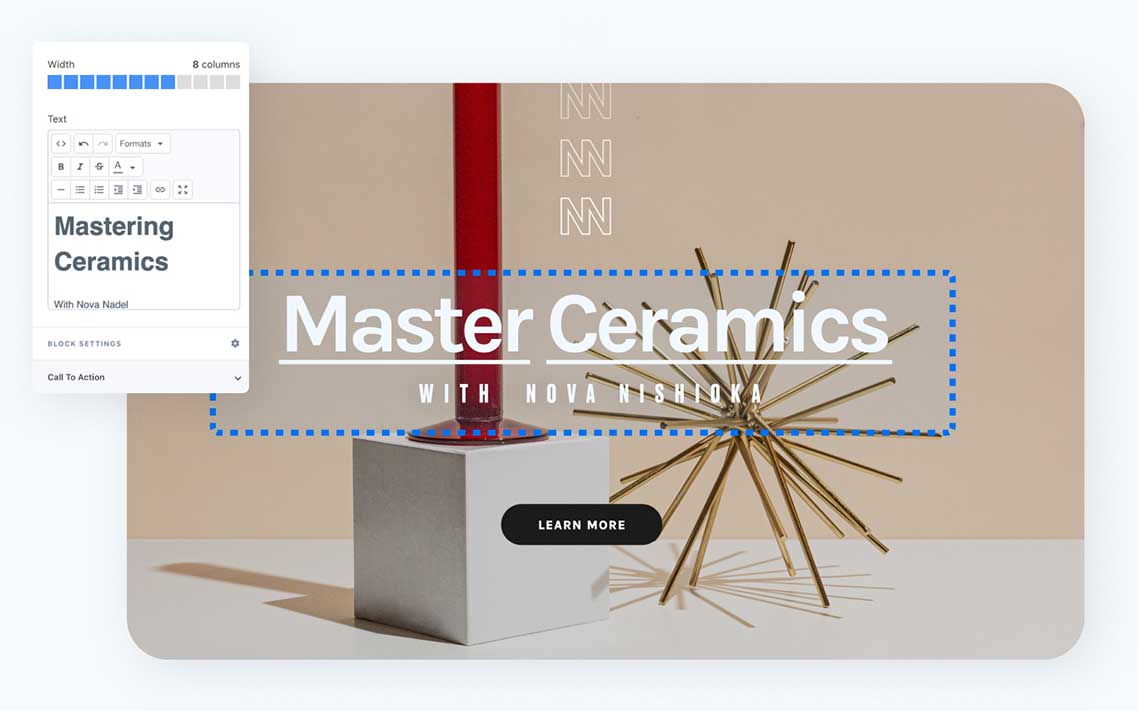
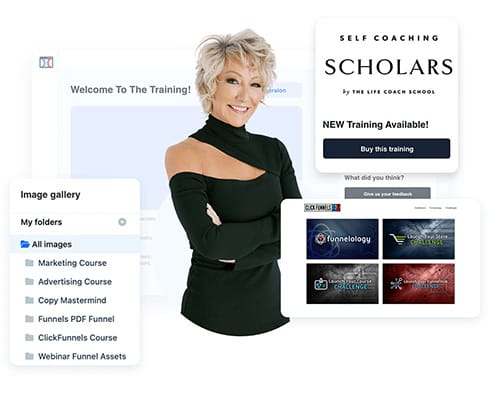
![Kajabi versus ClickFunnels: Which is Better? Kajabi Pricing [Jun 2023]: Which Plan for What Audience?](https://articles.entireweb.com/wp-content/uploads/2023/06/1687669186_837_Kajabi-versus-ClickFunnels-Which-is-Better.png)













